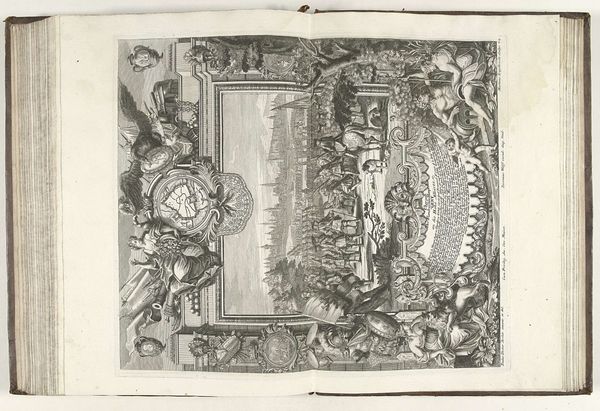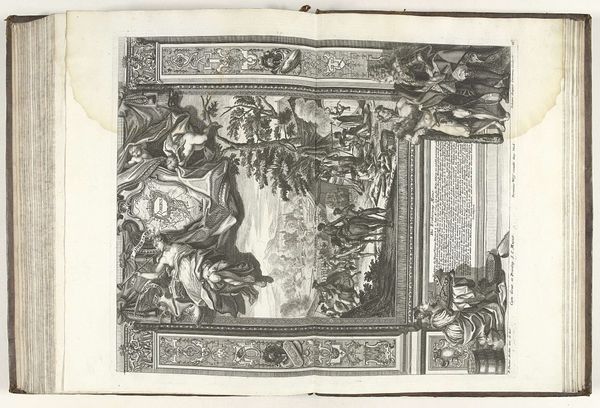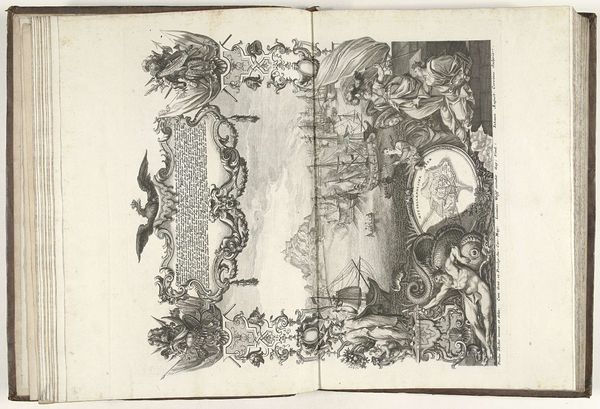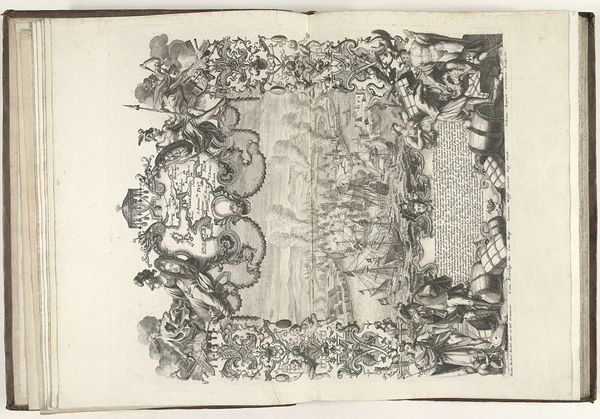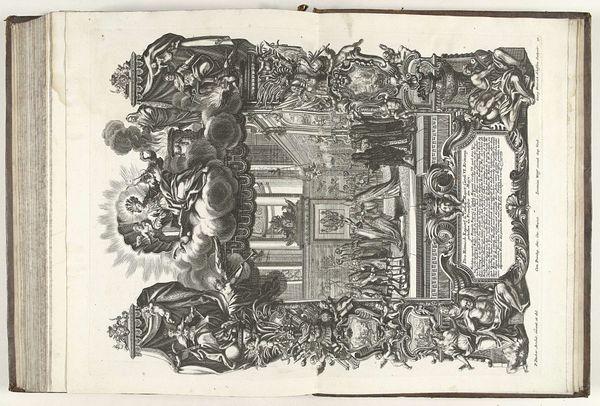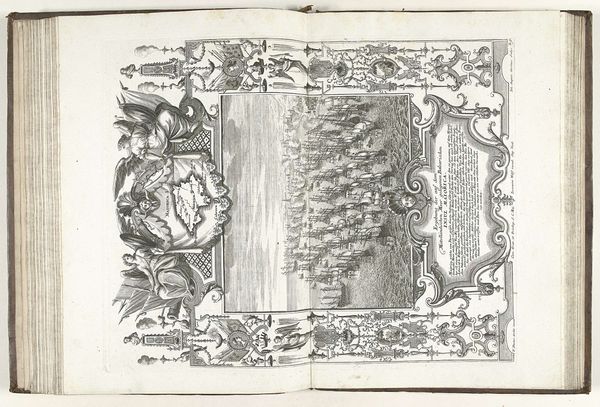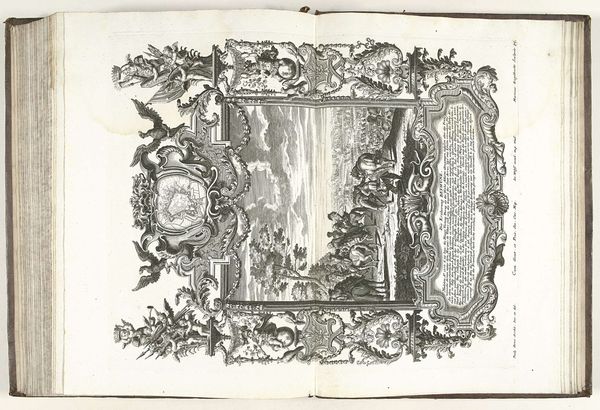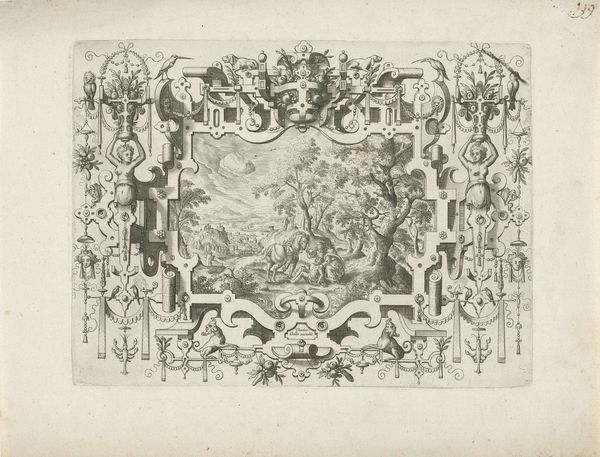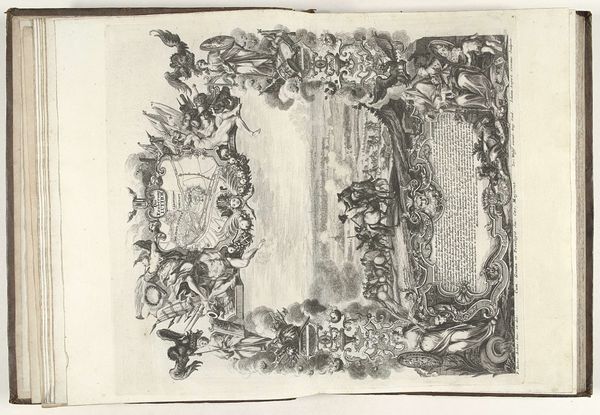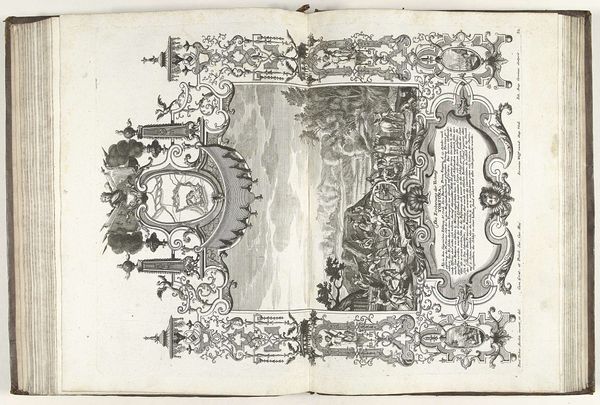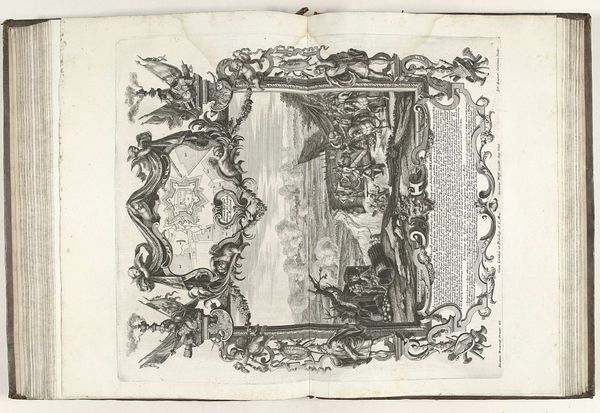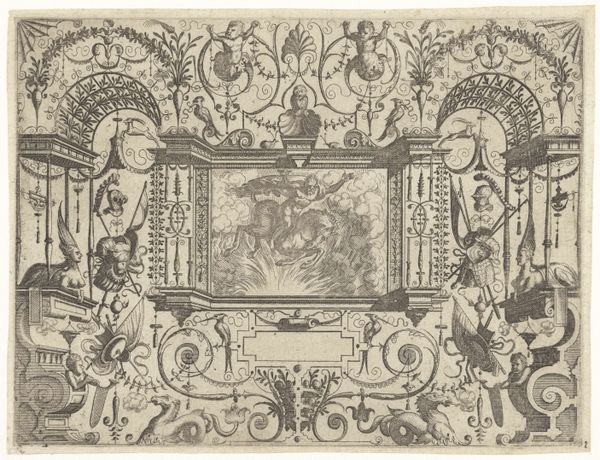
Verkiezing van Karel III tot Duits keizer Karel VI, 1711 1712 - 1715
0:00
0:00
print, engraving
#
allegory
#
baroque
# print
#
history-painting
#
engraving
Dimensions: height 527 mm, width 410 mm
Copyright: Rijks Museum: Open Domain
Curator: This elaborate print is titled “Verkiezing van Karel III tot Duits keizer Karel VI, 1711,” or "The Election of Charles III as Holy Roman Emperor Charles VI, 1711." It was created between 1712 and 1715 by Johann August Corvinus. Editor: Wow, it's quite overwhelming! A swirl of figures framed by elaborate ornamentation… It’s almost hard to know where to focus my eye. A real feast for the eyes, although perhaps an acquired taste? Curator: It's certainly a Baroque piece, overflowing with allegory and symbolism typical of the period. Consider the context: The print commemorates Charles VI's election as Holy Roman Emperor, a pivotal moment in the complex power dynamics of early 18th-century Europe. It functions almost as a piece of political propaganda. Editor: I see that! Knowing that it served a propagandistic purpose adds another layer. The framing, like a theatrical stage, sets a very specific scene. Who are we meant to admire, to pity, to fear? It invites us to question how power is visually constructed and what narratives it enforces. Curator: Precisely. Notice how the central scene depicting the election itself is elevated within the architectural frame. Above, a portrait medallion alludes to imperial lineage, reinforcing Charles’s legitimacy. This work speaks to the close ties between art and political power during the Baroque era, where images were deliberately crafted to shape public perception and legitimize rulers. The museum highlights the Dutch context within European History. Editor: Absolutely. Looking at it with a more critical eye, it's easy to see how the composition promotes a specific narrative of power and authority, carefully constructed through visual cues, allegorical figures, and detailed ornamentation. The chaos of the multitude vs. the calm figure of Charles speaks of control. Curator: Ultimately, examining pieces such as this offers insight into the art world and European political theater. The elaborate artistry isn't merely decorative; it’s a calculated tool to project power, reinforce narratives, and leave a lasting imprint on the public imagination. Editor: It makes me want to ask: who exactly was this artwork made for, and whose story does it consciously erase by presenting Charles as ordained to rule? Curator: Food for thought indeed!
Comments
No comments
Be the first to comment and join the conversation on the ultimate creative platform.
